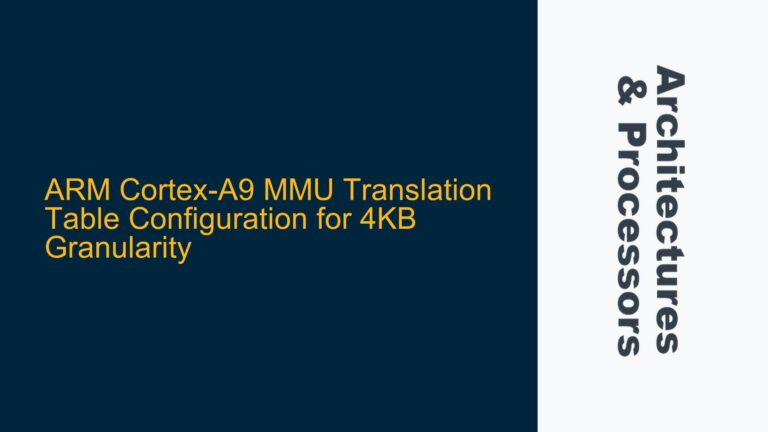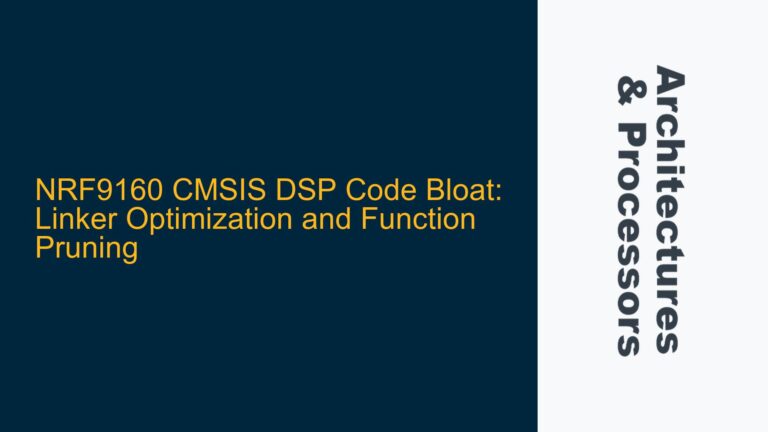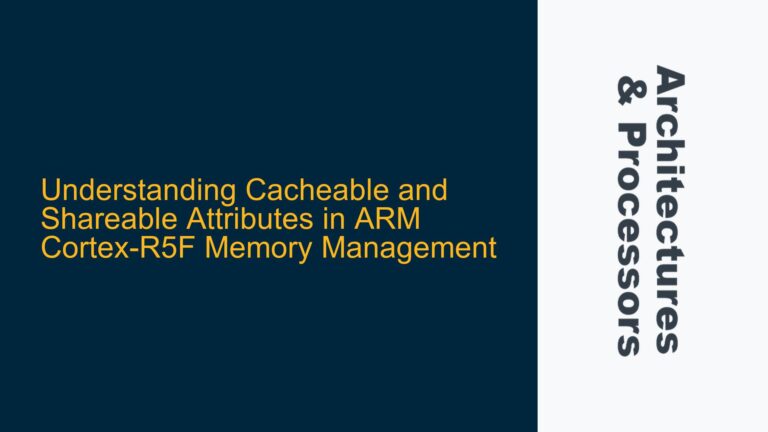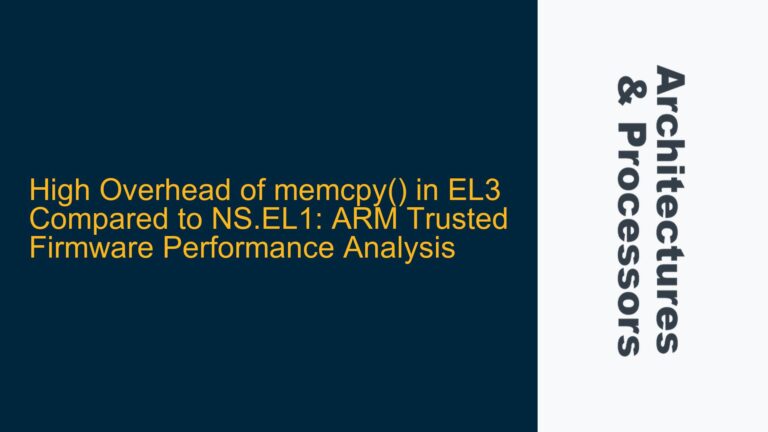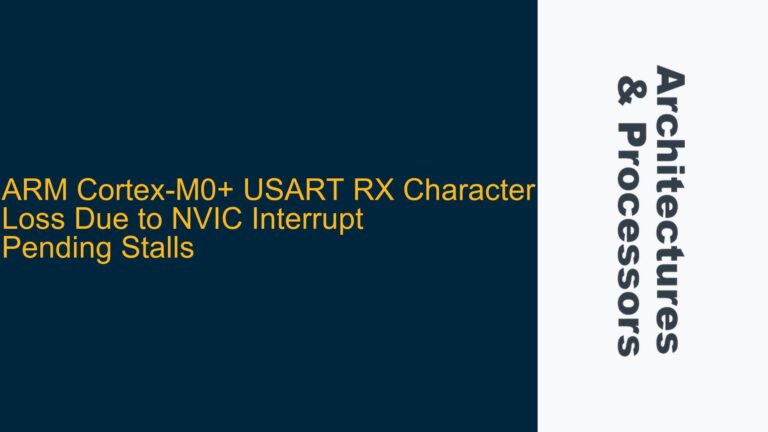GIC Interrupt State Transitions and Linux Handling Flow
The Generic Interrupt Controller (GIC) in ARM architectures plays a pivotal role in managing interrupts for multi-core systems. The GIC operates with a state machine that transitions interrupts through several states: Inactive, Pending, Active, and Active & Pending. Understanding these states is critical for diagnosing issues in interrupt handling, particularly in Linux-based systems.
In the context of Linux, the GIC interacts with the kernel’s interrupt handling mechanisms to manage hardware interrupts efficiently. When an interrupt is raised by an IP block, the GIC acknowledges it and forwards it to the CPU. The Linux kernel then acknowledges the interrupt at the GIC level, transitioning it to the Active state. However, a critical point of confusion arises when the Linux kernel marks the interrupt as End of Interrupt (EOI) before invoking the IP-specific handler. This sequence raises questions about the timing of interrupt state transitions and potential race conditions.
The GIC’s state transitions are as follows:
- Inactive: No interrupt is pending or being serviced.
- Pending: The interrupt has been raised by the IP block and acknowledged by the GIC but not yet by the CPU.
- Active: The interrupt has been acknowledged by the CPU and is being serviced.
- Active & Pending: The CPU is servicing the interrupt, and the IP block has raised the same interrupt again.
In Linux, the sequence of operations is:
- The IP block raises an interrupt, and the GIC delivers it to the CPU.
- The Linux kernel acknowledges the interrupt at the GIC level, moving it to the Active state.
- Before calling the IP-specific handler, the Linux kernel marks the interrupt as EOI, transitioning it to the Inactive state.
- The IP-specific handler is invoked.
This sequence creates a potential race condition between steps 3 and 4, where the interrupt is marked as Inactive before the IP-specific handler has a chance to clear the interrupt line. This could lead to missed interrupts or improper handling.
EOImode Configuration and Priority Drop Mechanics
The behavior of the GIC’s EOI mechanism is influenced by the EOImode setting, which determines how the GIC handles priority drop and interrupt deactivation. The EOImode setting is crucial for understanding the Linux kernel’s interrupt handling flow and its interaction with the GIC.
When EOImode is set to 0, a write to the EOI register performs both priority drop and interrupt deactivation. Priority drop updates the Running Priority of the CPU Interface (CPUIF), allowing lower-priority interrupts to be serviced. Interrupt deactivation updates the state machine of the interrupt, transitioning it from Active to Inactive.
When EOImode is set to 1, a write to the EOI register only performs priority drop. A separate write to the Deactivate Interrupt Register (DIR) is required to perform interrupt deactivation. This separation allows for more fine-grained control over interrupt handling, particularly in scenarios where nested interrupts or interrupt prioritization is critical.
In the Linux kernel, the supports_deactivate_key static branch checks whether EOImode is enabled. If EOImode is set to 1, the kernel writes to the EOI register to perform priority drop but does not deactivate the interrupt. This means the interrupt remains in the Active state until a subsequent write to the DIR register is performed.
The Linux kernel’s approach to handling EOI is designed to optimize interrupt handling by deferring interrupt deactivation until after the IP-specific handler has completed its work. This ensures that the interrupt line is properly cleared before the interrupt is marked as Inactive, preventing race conditions and ensuring reliable interrupt handling.
Implementing Proper Interrupt Handling with GIC and Linux
To address the potential race condition between marking an interrupt as EOI and invoking the IP-specific handler, the following steps should be taken:
-
Ensure Proper EOImode Configuration: Verify that the EOImode setting in the GIC is configured correctly for the specific use case. If nested interrupts or fine-grained prioritization is required, EOImode should be set to 1. Otherwise, EOImode can be set to 0 for simpler interrupt handling.
-
Modify Linux Kernel Interrupt Handling Flow: Adjust the Linux kernel’s interrupt handling flow to ensure that the IP-specific handler is invoked before marking the interrupt as EOI. This can be achieved by modifying the
__exception_irq_entryfunction to defer the EOI write until after the IP-specific handler has completed its work. -
Add Memory Barriers and Synchronization: Insert memory barriers (
isbinstructions) to ensure proper synchronization between the CPU and the GIC. This prevents out-of-order execution from causing race conditions in interrupt handling. -
Validate Interrupt State Transitions: Use debugging tools to validate the state transitions of interrupts in the GIC. This ensures that interrupts are being handled correctly and that no race conditions are occurring.
-
Optimize IP-Specific Handler Execution: Ensure that the IP-specific handler executes quickly and efficiently to minimize the window of opportunity for race conditions. This may involve optimizing the handler code or using hardware features to accelerate interrupt handling.
By following these steps, the potential race condition between marking an interrupt as EOI and invoking the IP-specific handler can be mitigated, ensuring reliable and efficient interrupt handling in Linux-based systems using the GIC.
Detailed Explanation of EOImode and Its Impact on Interrupt Handling
The EOImode setting in the GIC has a significant impact on how interrupts are handled in Linux. When EOImode is set to 0, the GIC combines priority drop and interrupt deactivation into a single operation. This simplifies interrupt handling but can lead to inefficiencies in systems with nested interrupts or complex prioritization requirements.
When EOImode is set to 1, the GIC separates priority drop and interrupt deactivation into two distinct operations. This allows the Linux kernel to perform priority drop early in the interrupt handling process, enabling lower-priority interrupts to be serviced while the current interrupt is still being processed. Interrupt deactivation is deferred until after the IP-specific handler has completed its work, ensuring that the interrupt line is properly cleared before the interrupt is marked as Inactive.
The Linux kernel’s use of the supports_deactivate_key static branch to check EOImode is a key part of this optimization. By only performing priority drop when EOImode is set to 1, the kernel ensures that interrupt deactivation is deferred until the appropriate time, preventing race conditions and ensuring reliable interrupt handling.
Debugging and Validating GIC Interrupt Handling
Debugging GIC interrupt handling in Linux requires a thorough understanding of both the GIC’s state machine and the Linux kernel’s interrupt handling mechanisms. The following steps can be used to debug and validate GIC interrupt handling:
-
Enable GIC Debugging Features: Many GIC implementations include debugging features that can be used to monitor interrupt state transitions and identify potential issues. These features can be enabled through the GIC’s configuration registers.
-
Use Kernel Debugging Tools: The Linux kernel includes a variety of debugging tools that can be used to monitor interrupt handling. These tools can provide detailed information about interrupt state transitions, handler execution times, and potential race conditions.
-
Validate Interrupt State Transitions: Use the GIC’s debugging features and kernel debugging tools to validate the state transitions of interrupts. Ensure that interrupts are transitioning correctly between Inactive, Pending, Active, and Active & Pending states.
-
Monitor Interrupt Handling Performance: Use performance monitoring tools to measure the execution time of interrupt handlers and identify potential bottlenecks. Optimize interrupt handling code to minimize execution time and reduce the risk of race conditions.
-
Test with Different EOImode Settings: Test the system with both EOImode set to 0 and EOImode set to 1 to validate the impact of EOImode on interrupt handling. Ensure that the system behaves correctly in both configurations and that no race conditions are introduced.
By following these steps, developers can ensure that GIC interrupt handling in Linux is reliable, efficient, and free from race conditions. This requires a deep understanding of both the GIC’s architecture and the Linux kernel’s interrupt handling mechanisms, as well as careful debugging and validation of the system’s behavior.

